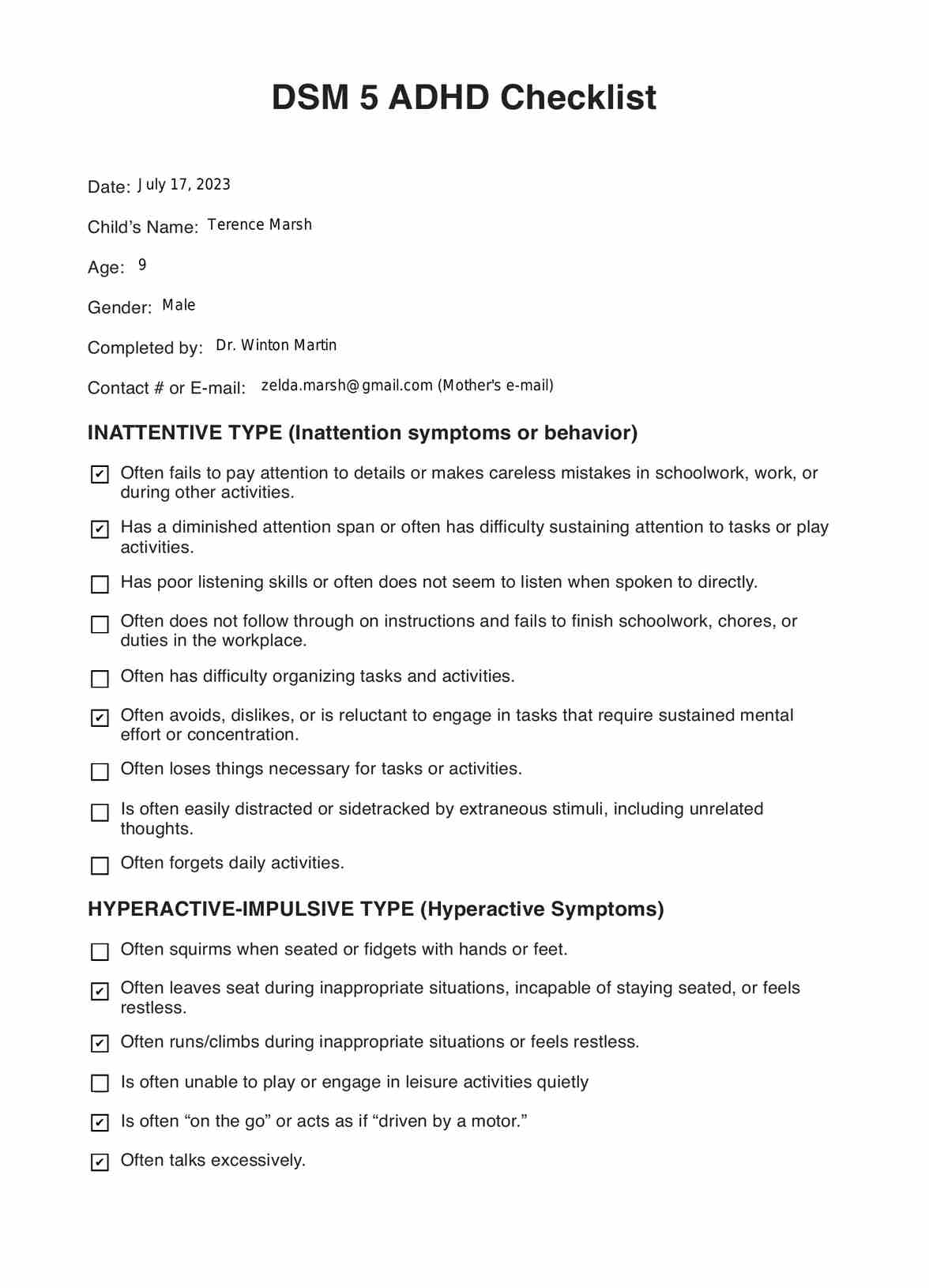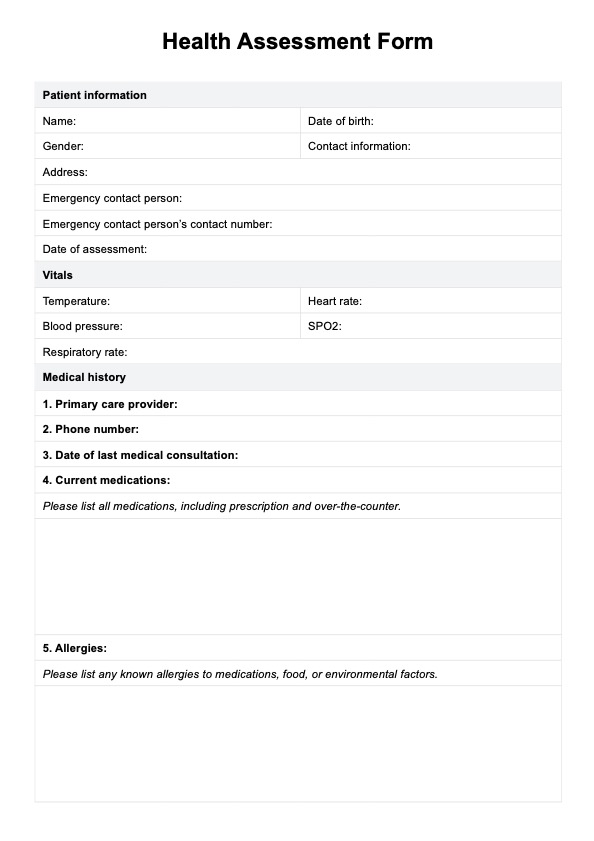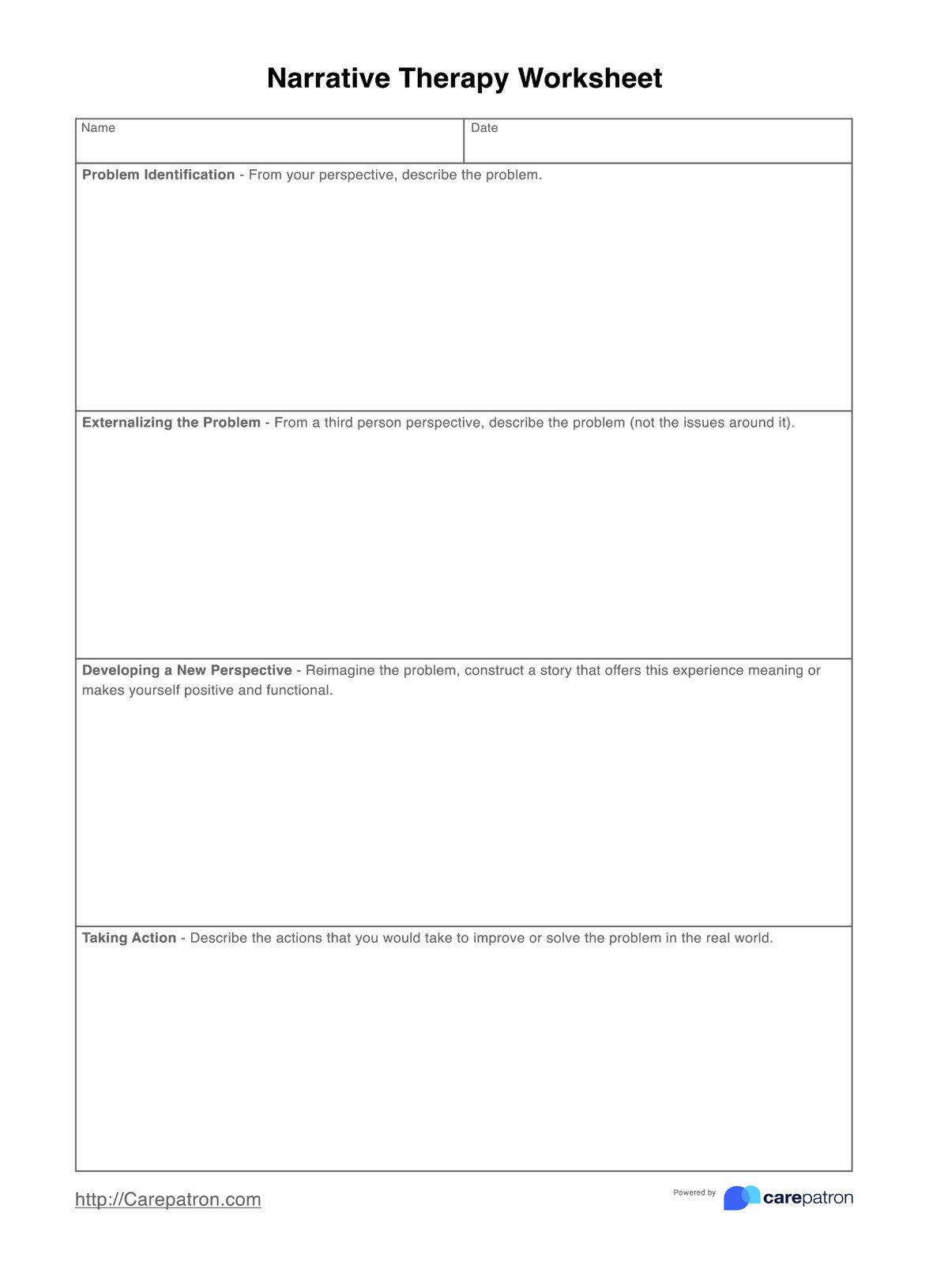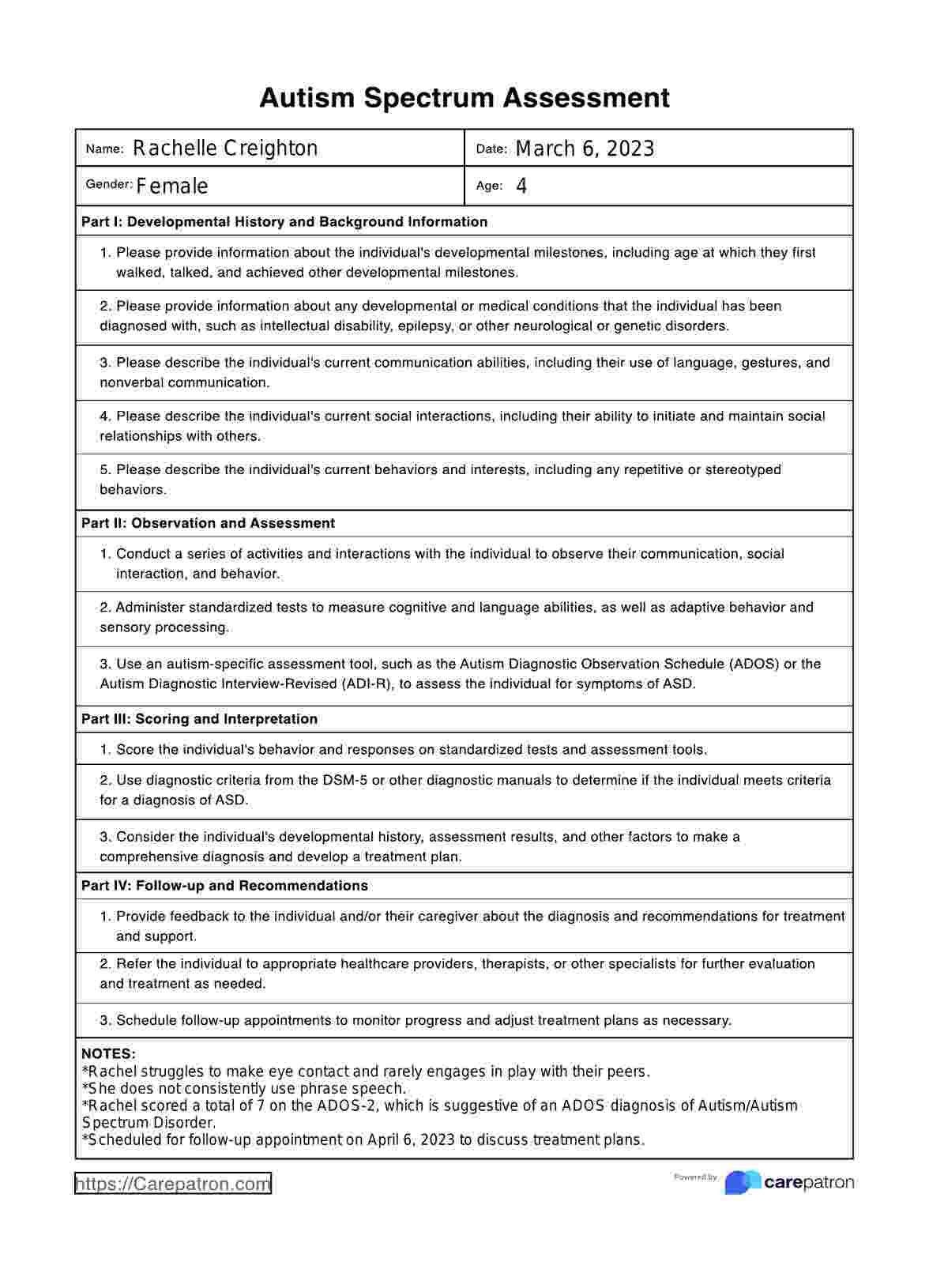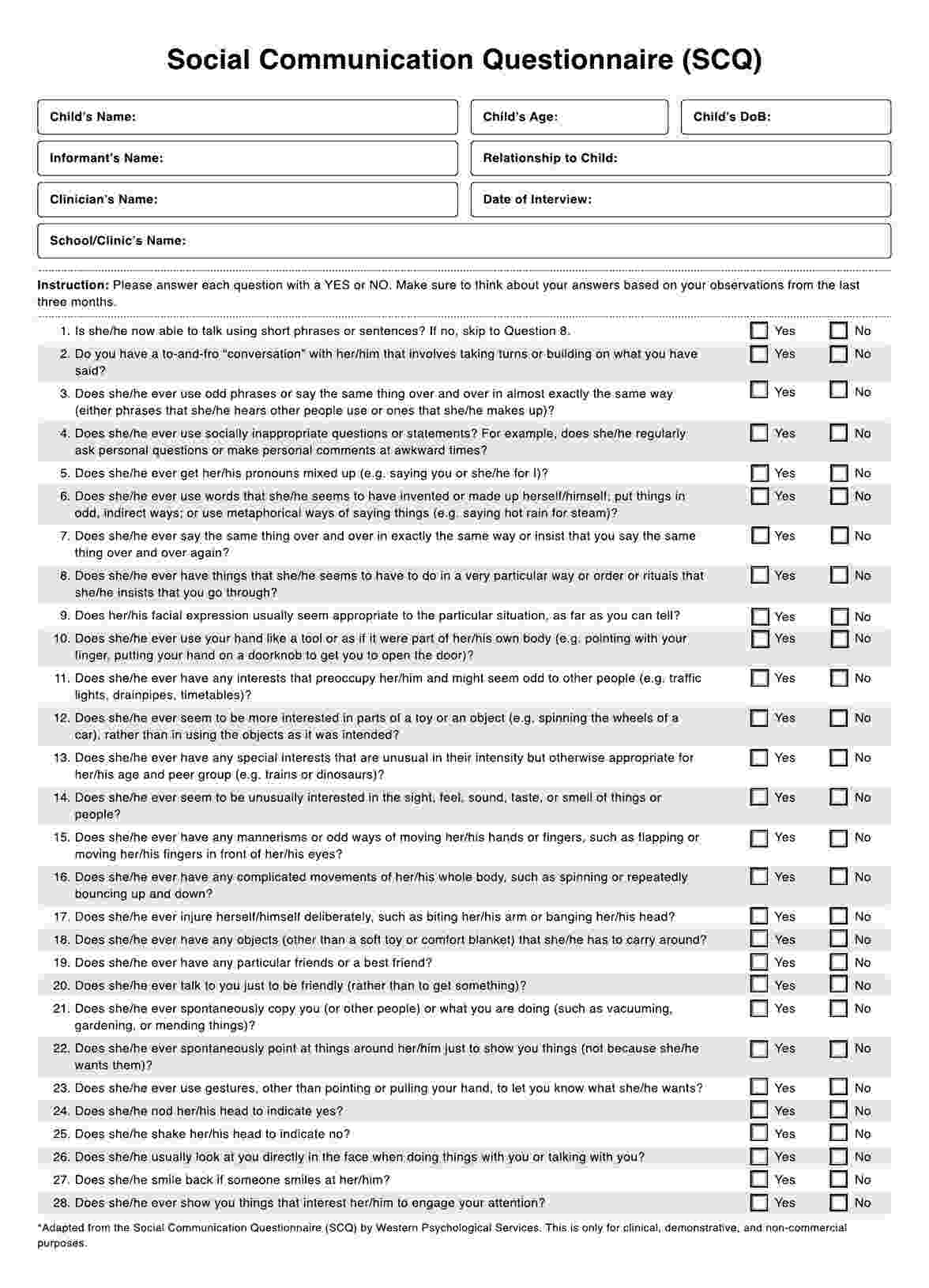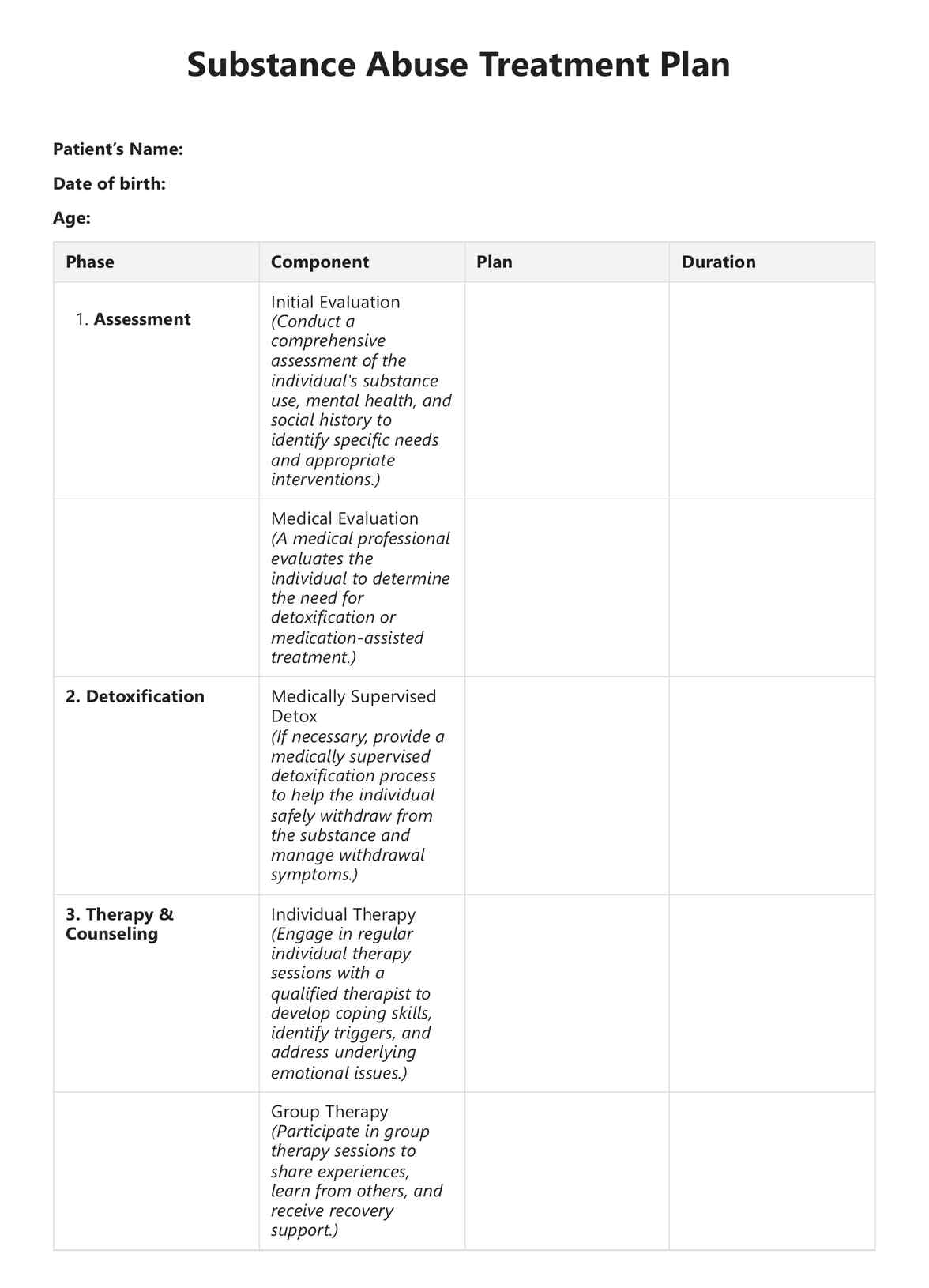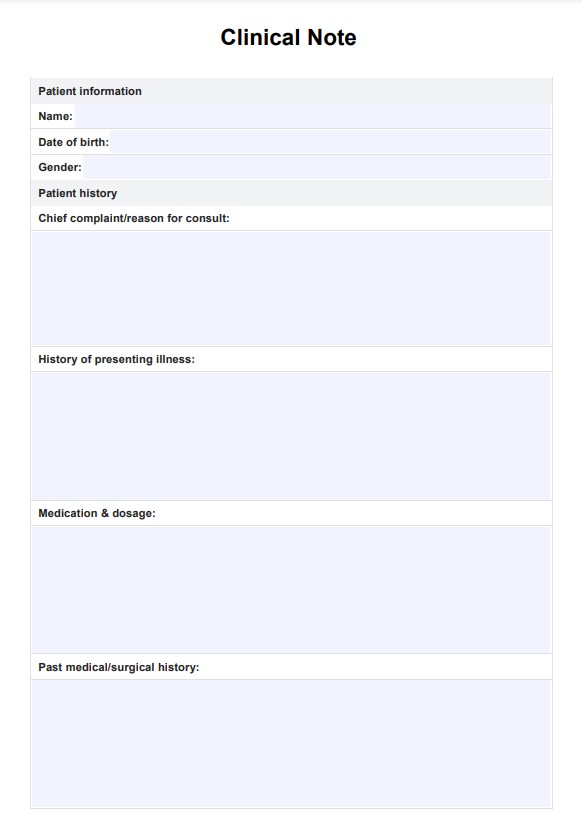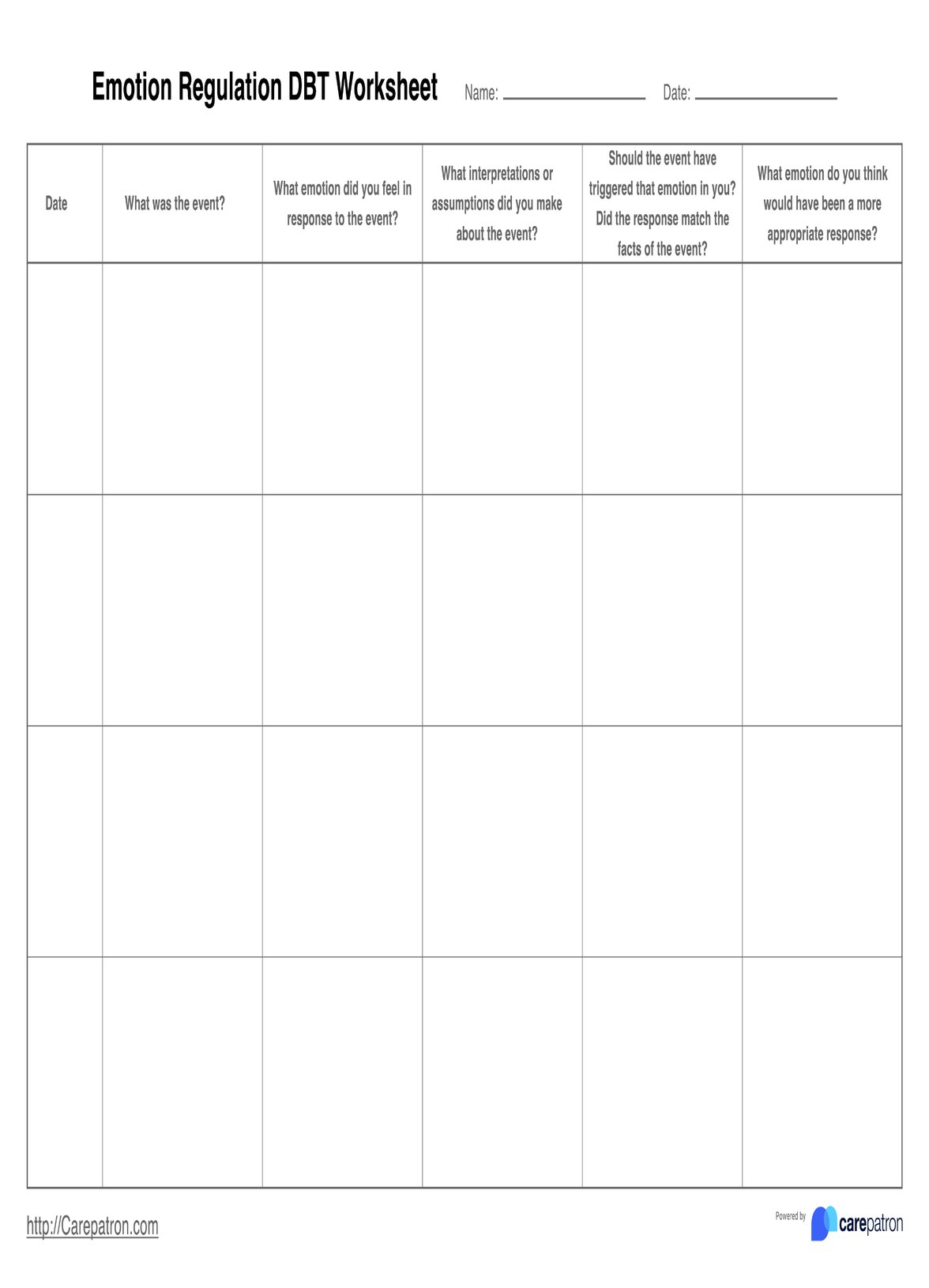Autism Treatment Evaluation Checklist (ATEC)
Discover how the Autism Treatment Evaluation Checklist (ATEC) can effectively track progress in autism treatments—a reliable tool for healthcare professionals.


What is autism spectrum disorder?
Autism Spectrum Disorder (ASD) is a complex neurodevelopmental disorder distinguished by particular behavior patterns, communication, and social interaction. Presenting a range of symptoms and levels of impairment, ASD is described as a 'spectrum' disorder, emphasizing the variation in the severity and combination of symptoms from one individual to another. This spectrum encapsulates conditions formerly diagnosed independently, such as autism, Asperger's syndrome, and pervasive developmental disorder not otherwise specified (PDD-NOS).
The root cause of ASD remains uncertain — however, it is typically attributed to a blend of genetic and environmental influences. Symptoms usually appear in the first two years of life, and they can range from mild, where individuals can live independently, to severe, where full-time support is necessary.
While ASD is a lifelong condition with no definitive cure, early diagnosis and intervention from mental health practitioners can significantly improve the quality of life for those affected, enhancing their ability to learn new skills and participate meaningfully in society.
Printable Autism Treatment Evaluation Checklist (ATEC)
The Printable Autism Treatment Evaluation Checklist (ATEC) is a valuable tool developed by the Autism Research Institute to assess and monitor various aspects related to autism spectrum disorders (ASD) in children. This one-page form is a normative data collection instrument that plays a vital role in diagnosing autism, measuring treatment effectiveness, and monitoring developmental progress.
The ATEC covers a range of domains, including social interaction, verbal and nonverbal communication, cognitive awareness, and sleep disturbances. It provides a quantitative evaluation through subscale scores, a total ATEC score, and score distributions, allowing for a comprehensive understanding of a child's symptoms and changes over time. The checklist is particularly a useful tool for parents, clinicians, and researchers seeking to identify children at risk for ASD, complement early behavioral intervention, and gather data on treatment outcomes.
Autism Treatment Evaluation Checklist (ATEC) Template
Autism Treatment Evaluation Checklist (ATEC) Example
How to use the Autism Treatment Evaluation Checklist (ATEC)
The Autism Treatment Evaluation Checklist (ATEC) measures changes in ASD symptomatology over time, thus providing a means to evaluate progress and tailor interventions accordingly.
Step 1: Procure the Autism Treatment Evaluation Checklist (ATEC)
To initiate the process, you must secure a printable Autism Treatment Evaluation Checklist (ATEC). This can be found on reputable websites like Carepatron or directly obtained from your healthcare provider.
Step 2: Understand the structure of ATEC
The ATEC comprises four subtests, each aimed at a specific domain of the individual's functioning. These include:
- Speech/Language Communication
- Sociability
- Sensory/Cognitive Awareness, and
- Health/Physical behavior
Each subtest includes questions designed to gauge the individual's abilities and behaviors.
Step 3: Rate each item
Every question in each subtest should be rated based on the individual's current behavior and ability level. It's crucial to answer as accurately as possible to ensure that the treatment's effectiveness is correctly measured.
Step 4: Sum the scores
Lower scores indicate fewer autistic traits, thus reflecting an improvement in the individual's ASD symptomatology. This scoring system allows for a clear, quantitative assessment of the changes over time, providing a valuable tool to track progress and adjust treatment plans as necessary.
By regularly utilizing our printable Autism Treatment Evaluation Checklist (ATEC), you can continually monitor the effects of the treatment, adjusting strategies as needed to ensure the best possible outcome for the individual with ASD.
When would you use the Autism Treatment Evaluation Checklist (ATEC)?
The Autism Treatment Evaluation Checklist (ATEC) proves invaluable at various stages of managing Autism Spectrum Disorder (ASD). Its primary utility lies in evaluating and monitoring the efficacy of treatments or interventions for individuals with ASD.
The ATEC is most appropriately employed when initiating a new treatment regimen for an individual with autism. Healthcare professionals, such as therapists, psychologists, and behavioral specialists, use the checklist to establish a baseline score representing the individual's initial state before the commencement of treatment. This baseline score serves as a reference point to which subsequent evaluations can be compared, thus tracking progress over time.
The continued use of the Autism Treatment Evaluation Checklist (ATEC) throughout the treatment process allows professionals to monitor changes in the individual's behavior and abilities. Regular assessments can illuminate patterns of improvement, stagnation, or regression, guiding adjustments in the intervention strategy to better suit the individual's needs.
The various ATEC scores also serves as a potent tool when evaluating the effectiveness of different treatment approaches or intervention strategies. By comparing scores from various treatment phases, healthcare professionals can determine which strategies are most beneficial for the individual, aiding in the refinement of a tailored, effective treatment plan.
The Autism Treatment Evaluation Checklist (ATEC) is a vital instrument for healthcare professionals to evaluate the starting point of treatment, track progress over time, and assess the comparative effectiveness of various treatment strategies in managing ASD.
What are the benefits of using the Autism Treatment Evaluation Checklist (ATEC)?
Carepatron's free Autism Treatment Evaluation Checklist (ATEC) offers several advantages for evaluating and tracking the progress of individuals with Autism Spectrum Disorder (ASD). Here are some of the key benefits of using this tool:
Accurate evaluation with ATEC
Accurate evaluation with the Autism Treatment Evaluation Checklist (ATEC) is pivotal for gaining valuable insights into the diverse challenges faced by individuals on the autism spectrum. ATEC offers a systematic and structured assessment across various domains, encompassing communication, sociability, sensory awareness, and health-related behaviors.
This quantitative tool empowers healthcare professionals, educators, and caregivers with a standardized approach to measure and monitor an individual's progress over time. The precision of ATEC's evaluation contributes to targeted interventions and support strategies, ensuring tailored approaches that address the unique needs of each person with autism. Its utility extends beyond individual care, fostering collaboration among mental health professionals and caregivers, and also contributing to the collective knowledge base on effective interventions for autism spectrum disorder.
User-friendliness of ATEC
The Autism Treatment Evaluation Checklist (ATEC) stands out for its remarkable user-friendliness, making it an invaluable tool for parents, educators, and healthcare professionals alike. With a straightforward design and easily understandable parameters, ATEC simplifies the process of assessing and monitoring the various aspects of autism spectrum disorder.
Its user-friendly nature allows for efficient data collection, enabling users to navigate the assessment seamlessly. ATEC's accessibility ensures that individuals involved in the care and support of those on the autism spectrum can engage with the evaluation process effectively. This user-centric approach not only enhances the overall experience of utilizing ATEC but also encourages consistent and reliable data input, contributing to more accurate and informed evaluations of individuals with autism.
Cost-effectiveness of ATEC
The Autism Treatment Evaluation Checklist (ATEC) proves to be a cost-effective solution for assessing and tracking individuals on the autism spectrum. Its streamlined and efficient evaluation process minimizes the time and resources required for comprehensive assessments, making it an economical choice for parents, educators, and healthcare professionals. By offering a valuable tool at an affordable cost, ATEC ensures accessibility to a wide range of users who seek accurate and reliable assessments for individuals with autism. This cost-effectiveness contributes to the widespread adoption of ATEC in various settings, providing a practical and sustainable solution for those involved in the care and support of individuals on the autism spectrum.
Validity and reliability of ATEC
Validity refers to the extent to which an assessment tool measures what it claims to measure. ATEC demonstrates face validity, as it appears to measure autism-related behaviors and functions. However, concerns have been raised about its construct and content validity, as some argue that the checklist might not comprehensively capture the complex and varied aspects of autism.
Reliability, on the other hand, assesses the consistency and stability of data collected by the measurement tool. ATEC has been reported to have moderate to high inter-rater reliability, indicating that different assessors are likely to obtain consistent results. Internal consistency, measured by the correlation between items within the checklist, has also been reported to be acceptable.
Commonly asked questions
Completing the ATEC usually takes about 15 minutes, but this can vary depending on the individual's symptom complexity.
The scores from each ATEC subtest are totaled. Lower scores indicate fewer autistic traits, suggesting the individual's condition is improving.
The ATEC is used when starting a new treatment for autism to measure its effectiveness over time.
The ATEC can be used by healthcare professionals, therapists, and parents familiar with the individual's behaviors and abilities.


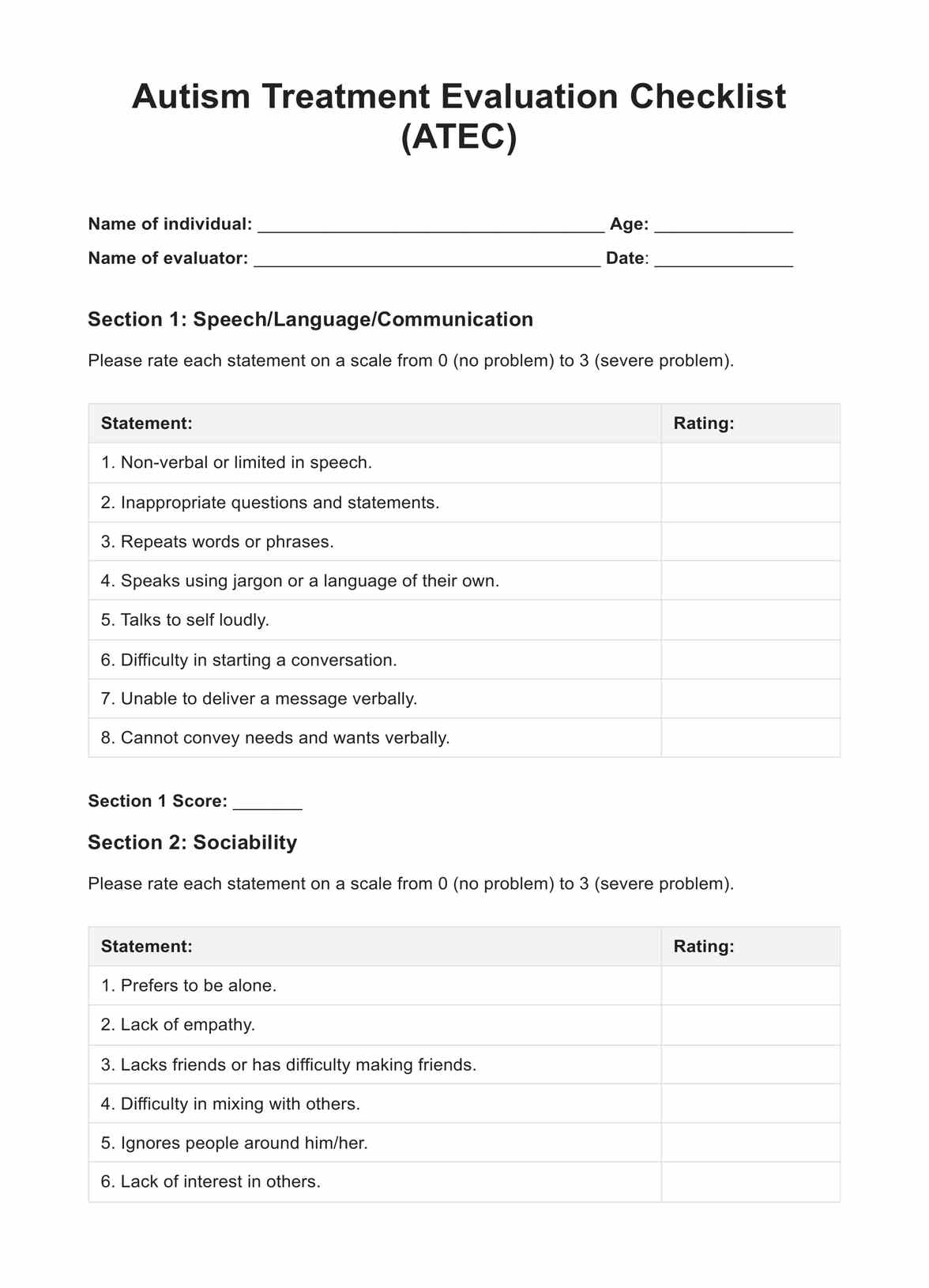
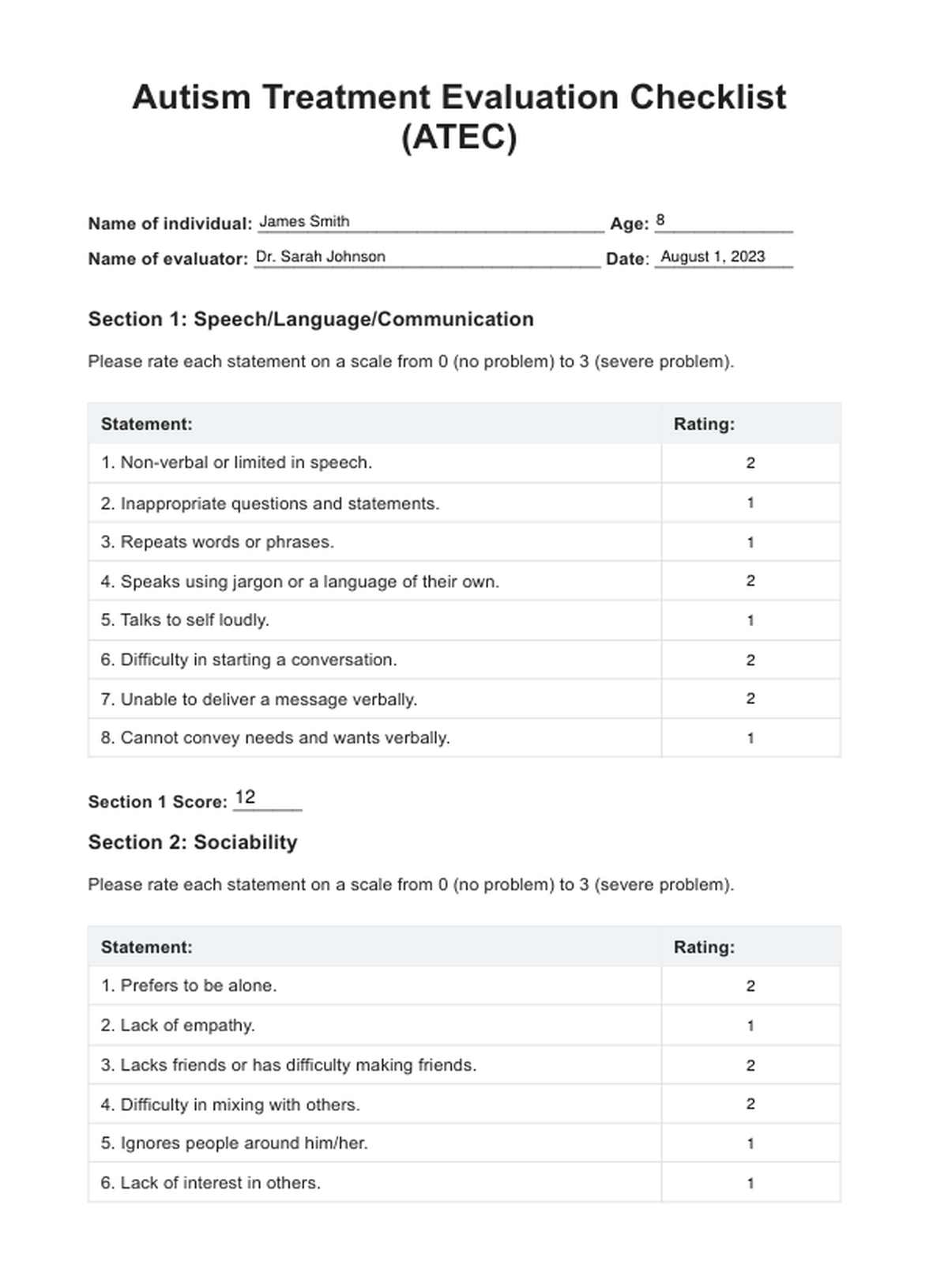



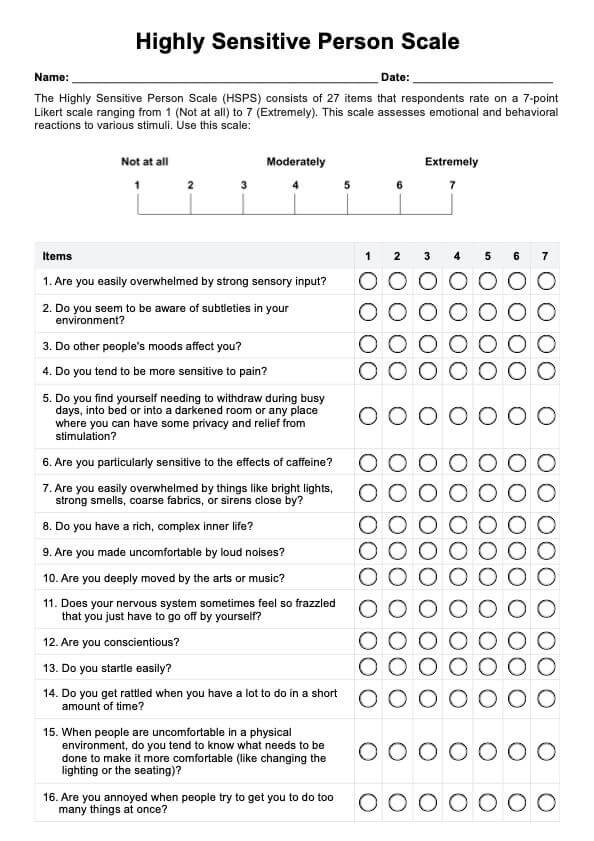









-template.jpg)























































































